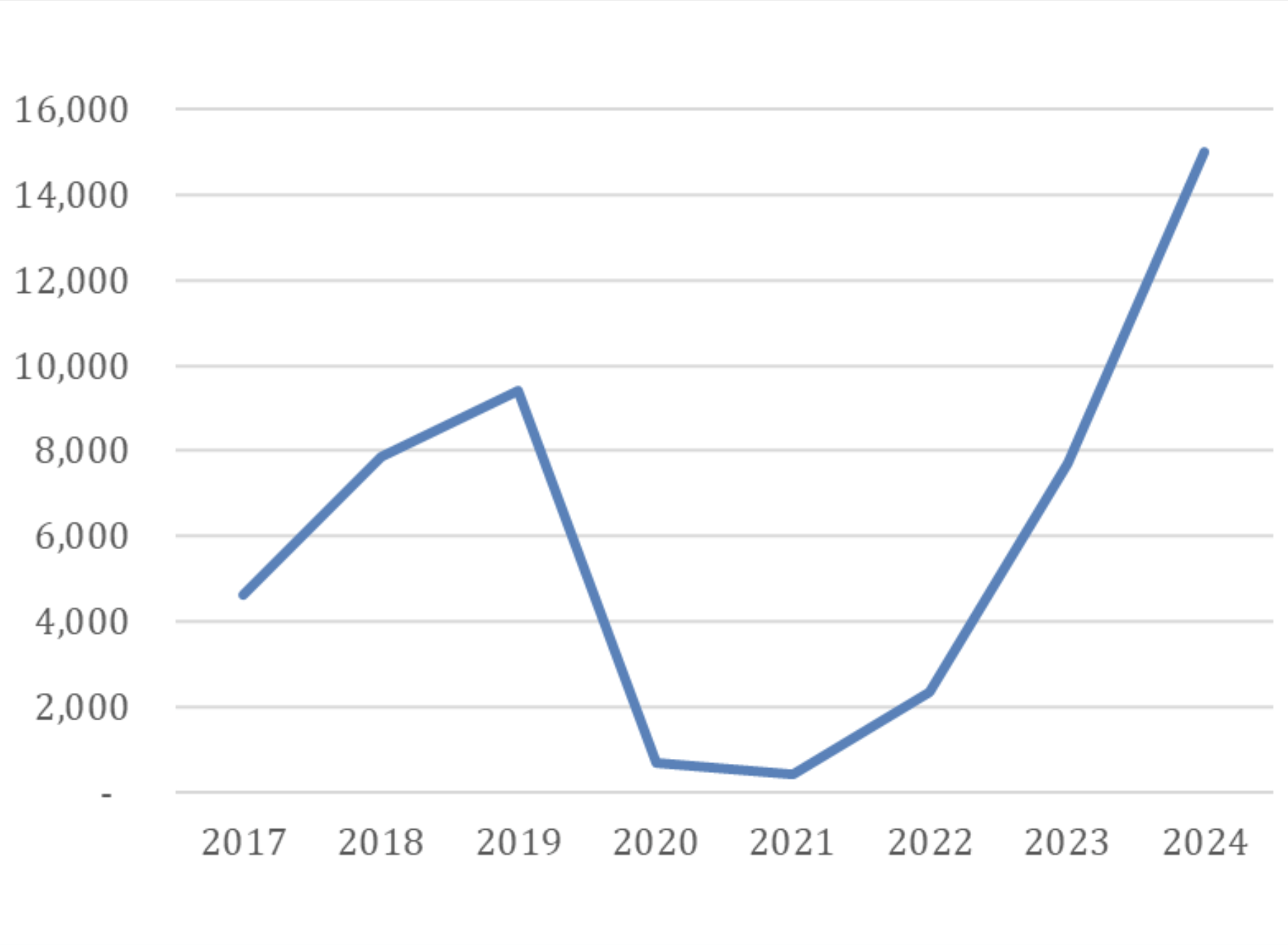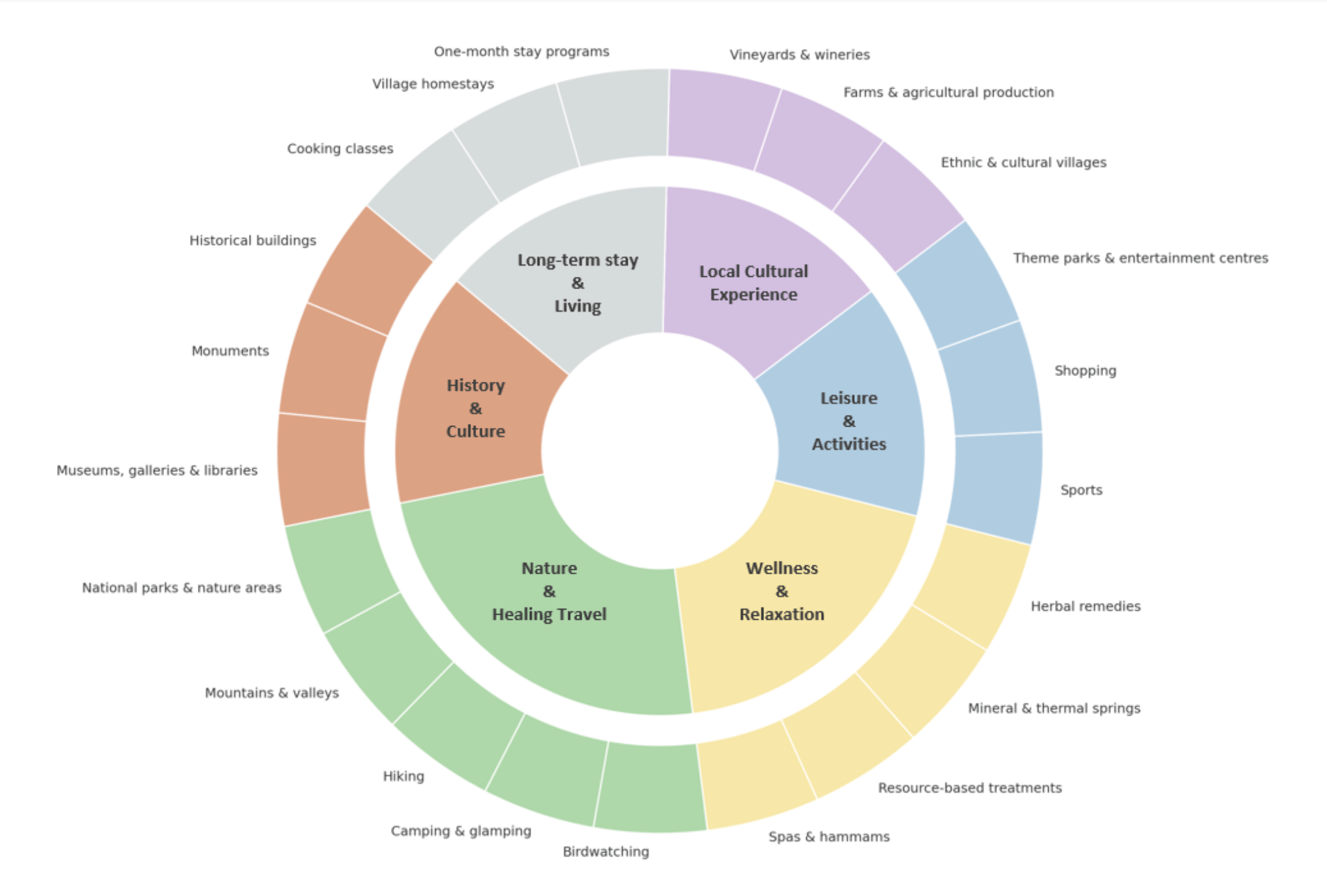South Korea
country profile
Feb 2025
South Korea is one of the key target markets for Azerbaijan’s tourism industry, showing strong growth potential, especially post-pandemic. Korean tourists appreciate Azerbaijan’s rich history, vibrant culture, natural landscapes, hospitality, and the unique blend of modern and historical elements. On average, South Korean tourists spend approximately $1,500-$2,000 per trip abroad, making a significant contribution to the global tourism economy.
January 1: New Year's Day
February: Lunar New Year Holiday (3-5 days, varies each year)
April-May: - Buddha’s Birthday (Varies each year)
May 1: Labor Day (Limited observance)
May 5: Children’s Day
July-August: Summer vacation (school holidays)
September-October: Chuseok (Korean Thanksgiving, 3-5 days, varies each year)
December 25: Christmas
December-January: Winter vacation (school holidays)
South Korean tourists primarily belong to the 25-45 age group (working professionals) and the 60+ senior segment. Family travellers, honeymooners, and independent travellers (FITs) are also growing segments.
City Breaks: Interest in modern urban landscapes and historical architecture.
Cultural & Heritage Tourism: Strong interest in museums, historical sites, and local traditions
Gastronomic Tourism: High appreciation for local food culture and wine tourism.
Luxury & Relaxation Travel: Preference for high-end accommodations and resorts.
Adventure & Activities: Interest in golf, hiking, skiing, and hot spring experiences.
Shopping Tourism: Visits to traditional markets and high-end shopping districts
Detailed Planning: Thoroughly research destinations through online travel agencies, social media, and recommendations from friends and family.
Value for Money: Prioritize destinations that offer good value for money with clear and transparent pricing.
Safety and Security: Choose destinations with a high level of safety and political stability.
Comfort and Quality: Favor high-quality accommodations and premium services, including luxury amenities.
Multi Destination: Enjoy traveling to multiple countries or destinations in a single trip to maximize the experience.
Cultural Experience: Seek authentic cultural experiences, including local cuisine, traditional customs, and historical landmarks.
Convenience: Value ease of travel, including direct flights, visa-free or easy visa access, and well-connected transportation systems.
Instagrammable Spots: Visit places that offer beautiful, photogenic locations for sharing on social media.
The average South Korean tourist spends between $1,500-$2,000 per trip abroad Budget allocation: 40% on accommodation, 30% on food & shopping, 20% on transportation
Average travel duration: 5-10 days, often visiting multiple destinations in one trip
Families
Seniors
Couples
Millennial generation
Solo Travelers
Luxury Travelers
Social Media (Instagram, YouTube, Naver Blog, KakaoTalk Channels)
Online Travel Agencies (Interpark, HanaTour, ModeTour, Yellow Balloon Tour)
Travel communities & forums (Naver Café, travel blogs, online reviews)
Word of mouth (friends & family recommendations)
Korean tourists typically plan and book their trips in advance, with the following tendencies:
For long-haul trips, they usually plan and book up to 6 months to a year in advance, especially for destinations requiring long flights and complex itineraries.
For major holidays or international trips, they tend to plan and book 3 to 6 months in advance, particularly for peak travel seasons such as summer and winter vacations.
Short-term trips or last-minute bookings are also common, especially for domestic travel or nearby destinations in East Asia (e.g., Japan, Taiwan) that require less preparation and have easier access, such as visa-free or simplified visa procedures.
For holiday weekends or quick getaways, booking can occur within 1 to 2 months in advance, with flexible options based on availability and promotions.
Online bookings
Travel agencies
Online travel agencies (OTAs): Yanolja, Yeogieottae, Agoda, Naver Travel, Skyscanner, Interpark, My real trip, Klook
Travel agencies: Hana Tour, Mode Tour, Very Good Tour, Lotte Tour, Yellowballoon
Most visited travel and tourism websites: hanatour.com, modetour.com, verygoodtour.com, lottetour.com, ybtour.co.kr
Influencer-Inspired Travel: Following the travel routes of influencers has become a popular trend among Korean travellers. Many people are increasingly inspired by travel content on Instagram and YouTube, where influencers share their itineraries, experiences, and hidden gems. As a result, travellers often seek to replicate these journeys, visiting the same destinations, staying at the same hotels, or even following the same food and activity recommendations to experience what their favourite influencers have showcased. This trend is especially prominent among younger audiences who are heavily influenced by social media content.
Rising Popularity of Customized and Small-Group Tours: Korean travellers are increasingly favouring customized and small-group tours, seeking more personalized and intimate travel experiences. This trend is especially popular among young professionals and families who prefer tailored itineraries and exclusive experiences over mass tourism.
Expanding Travel Destinations: With the easing of visa requirements for many countries, Korean tourists are exploring a wider range of destinations, both nearby and long-haul. Popular visa-free or visa-on-arrival countries, such as Japan, Taiwan, and Southeast Asia, continue to see high demand, while destinations like Europe, the Middle East, and the Americas are gaining popularity for longer trips.
Korean tourists typically take vacations lasting at least 7-10 days, with 3-5 days spent in one international destination. They generally prefer combined tours, often visiting multiple destinations in a single trip. This is especially true for long-haul trips, where travellers enjoy exploring more than one city or country to maximize their travel experience.
Hana Tour
Mode Tour
Very Good Tour
Lotte Tour
Yellowballoon
Interpark
Yanolja
Yeogieottae
Agoda
Naver Travel
• No direct flights from South Korea to Azerbaijan; travellers typically transit via Dubai, Istanbul, or Doha
• Major South Korean airlines (Korean Air, Asiana Airlines) offer connecting flights through partner carriers
WTIC and SITF
(However, tourism boards are increasingly holding independent pop-up events these days.)
There has been interest in Azerbaijan from South Korean tourists since 2017, with a break in numbers due to COVID-19 which started recovering from 2021 onwards.
From 2021 to 2023, the numbers started to recover post-pandemic, with arrivals increasing by 467% in 2022 and by 228% in 2023 compared to 2022. The numbers in 2022 were an indication of a robust recovery trend.
In 2024, the number of arrivals from South Korea reached 15,004 travellers with a 94.6% increase from the prior year.

Most South Korean visitors to Azerbaijan travel for leisure and entertainment purposes, while some visit for business reasons.
The average South Korean tourist spends 300-600 AZN per day in Azerbaijan, with approximately 40% of their budget allocated to transport, followed by accommodation (35%) and food (25%).
In 2024, 90% of South Koreans stayed in Azerbaijan for 2-3 nights, while 10% stayed for 4-5 nights.
The most visited regions by South Koreans in Azerbaijan are Baku (Absheron), Sheki and Gabala.
Korean travellers prefer diverse cultural and natural experiences, particularly those related to Azerbaijan Tourism Board (ATB) product sub-categories such as:
History & Culture: Historical buildings, monuments, museums, galleries & libraries
Nature & Healing Travel: National parks & nature areas, mountain & valley trekking, camping & glamping, birdwatching
Wellness & Relaxation: Mineral & thermal springs, spas & hammams, herbal remedies, resource-based treatments
Leisure & Activities: Sports, shopping, theme parks & entertainment centers
Local Cultural Experiences: Ethnic & cultural villages, farms & agricultural production, vineyards & wineries
Long-term Stay & “Living for a Month” Experiences: Immersive local village stays, rural healing retreats

"Fits all" (Must-visit for first-time travelers)
Baku Historic & Cultural Tour (Old Town, museums, and historical landmarks)
Gobustan Nature Trekking & Thermal Spa Experience
Traditional Folk Village Visit & Local Cuisine Experience
"Add-ons" (Programs for long-term stays & repeat visitors)
Winery Tour & Culinary Experiences
Wellness Retreat at Resorts & Thermal Spas
Golf & Active Sports Packages
"Tailored" (Customized experiences for Korean travelers)
"Living for a Month" Program (Nature stay & immersive local lifestyle experience)
Traditional Village Homestay & Cooking Class
Special Theme Tours (e.g., Filming Locations Tour, Spa & Healing-focused Programs)
|
|
Fits all |
Add-ons |
Tailored |
|
Historical Buildings |
|
|
|
|
Monuments |
|
|
|
|
Museums, Galleries & libraries |
|
|
|
|
Sports |
|
|
|
|
Ethnic & Cultural Villages |
|
|
|
|
Farms & agricultural production |
|
|
|
|
Shopping |
|
|
|
|
Vineyards & wineries |
|
|
|
South Korea's Tourism Market Trends Show Strong Momentum:
Despite the ongoing economic recession, the number of people traveling abroad has been increasing. According to the "2025 First Half Travel Plans" report released by Korea Research on the 8th, the number of overseas travelers has been steadily rising since 2021. Looking at the annual overseas travel experience rates, the numbers were 28.71 million in 2019, 4.28 million in 2020, 1.22 million in 2021, 6.55 million in 2022, and 22.71 million in 2023. The period from 2020 to 2022 saw a sharp decline in overseas travel due to the impact of COVID-19. From January to November of last year, the cumulative number of overseas travelers reached 25.97 million, already surpassing the total number of overseas travelers in 2023. (Source: News Link)
During the Lunar New Year holiday, a record number of 4.33 million passengers flew. According to data provided by the Korea Airports Corporation and Incheon International Airport Corporation, 4.33 million passengers (combined departures and arrivals) used 13 airports across the country from January 24 to February 2, excluding Yangyang and Muan airports. This represents a 106.8% increase compared to last year's Lunar New Year holiday, which saw 2.09 million passengers. It also marks a 64% increase compared to last year's six-day Chuseok holiday, which had 2.64 million passengers. By airport, Incheon International Airport handled the most passengers, with 2.19 million, making up half of the total. This was followed by Jeju Airport with 754,783 passengers (17.4%), Gimpo Airport with 591,200 (13.6%), and Gimhae Airport with 475,917 (11%). As for international destinations, Japan topped the list with 789,829 travelers, followed by China with 391,635 and Vietnam with 345,818. (Source: News Link)
The Korean trade values punctuality, strong relationships, and clear communication. While Korean is the native language, English communication is widely accepted and effective for business, especially in the tourism and trade sectors.
KakaoTalk is the preferred platform for initial and follow-up communications. Face-to-face meetings are still important, particularly during major trade shows like KOTFA (Korea World Travel Fair) and STIF (Seoul Tourism Industry Fair). However, tourism boards are increasingly focusing on independent pop-up events to showcase their destinations and engage with a more targeted audience. These events offer a more intimate and personalized way to connect with potential partners and clients.
Key market centers to visit include Seoul, the largest hub, as well as other major cities like Busan, Incheon, and Daegu, with secondary cities like Ulsan, Changwon, and Jeonju being important for regional outreach.
Gunel Alakbarova, Regional Manager for East Asia